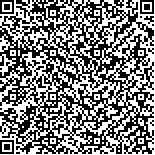何霏,王肖旋,余梦莲,等.肌内效贴扎对髂胫束综合征膝外侧痛患者感觉输入的影响[J].中华物理医学与康复杂志,2024,46(4):325-330
扫码阅读全文

|
| 肌内效贴扎对髂胫束综合征膝外侧痛患者感觉输入的影响 |
|
| |
| DOI:10.3760/cma.j.issn.0254-1424.2024.04.008 |
| 中文关键词: 肌内效贴扎 髂胫束综合征 感觉输入 皮肤形变 本体感觉 |
| 英文关键词: Kinesio taping Iliotibial band syndrome Sensory input Skin deformation Proprioception |
| 基金项目:国家重点研发计划“日常生活及运动康复辅具的智能适配及示范应用”项目(2020YFC2005700) |
|
| 摘要点击次数: 3147 |
| 全文下载次数: 3393 |
| 中文摘要: |
| 目的 探讨不同形式肌内效贴扎对髂胫束综合征(ITBS)膝外侧痛患者感觉输入的影响。 方法 共选取30例ITBS膝外侧痛患者作为研究对象,利用等速系统和数字震动感觉检查仪,分别在无贴扎、股外侧肌放松位贴扎、股外侧肌拉伸位贴扎三种条件下,检测ITBS患者膝关节位置觉、运动觉及股骨外侧髁处震动觉数据,并利用光学空间坐标采集系统观察患者在端坐位时其股外侧肌表面皮肤长度变化情况。 结果 30例入选患者其膝关节位置觉被动角度重现测试值(PAR)、运动觉被动运动阈值测量值(TDPM)、股骨外侧髁处皮肤震动感觉阈值(VPT)及股外侧肌表面皮肤长度D0,在NT(无肌内效贴扎)、T1(股外侧肌放松位贴扎)、T2(股外侧肌拉伸位贴扎)三种贴扎条件下均存在统计学差异(P<0.001),在NT条件下PAR、TDPM及D0数值均最大,在T1条件下上述指标数值次之,在T2条件下上述指标数值最小。在T1及T2条件下,入选患者PAR(T1:r=0.370,T2:r=0.411)、TDPM(T1:r=0.513,T2:r=0.562)及VPT(T1:r=0.492,T2:r=0.599)均与股外侧肌表面皮肤长度具有正相关性(P<0.05)。 结论 肌内效贴扎可能通过产生局部皮肤形变,影响ITBS膝外侧痛患者感觉输入,在肢体拉伸摆位时贴扎可使皮肤产生更显著的各向形变,进而获得更多的感觉输入,有助于改善患者本体感觉功能。 |
| 英文摘要: |
| Objective To explore the impact of different forms of kinesio taping on sensory input in patients with iliotibial band syndrome (ITBS) experiencing lateral knee pain. Methods Thirty ITBS patients were tested using an isokinetic system and a digital vibration sensory analyzer when the lateral thigh muscle was not taped, taped in the relaxed position, and taped in the stretched position. Their positioning, motor sensation at the knee joint and vibration sensation at the lateral condyle were recorded. In addition, an optical motion capture system was used to observe any changes in the length of the skin on the surface of the lateral thigh muscle in a seated position. Results The three taping methods produced significant differences in terms of passive knee angle reproduction, passive movement detection threshold, vibration perception threshold, and local skin length at the lateral condyle of the femur. Taping in the stretched position produced the greatest sensitivity and the best passive positioning, followed by taping while relaxed and then no taping at all. All of the indicators were significantly positively correlated with the observed skin length. Conclusion Kinesio taping may affect sensory input by generating local skin deformation. Moreover, taping in a stretched position results in more multidirectional skin deformation, leading to increased sensory input and improved proprioception. |
|
查看全文
查看/发表评论 下载PDF阅读器 |
| 关闭 |